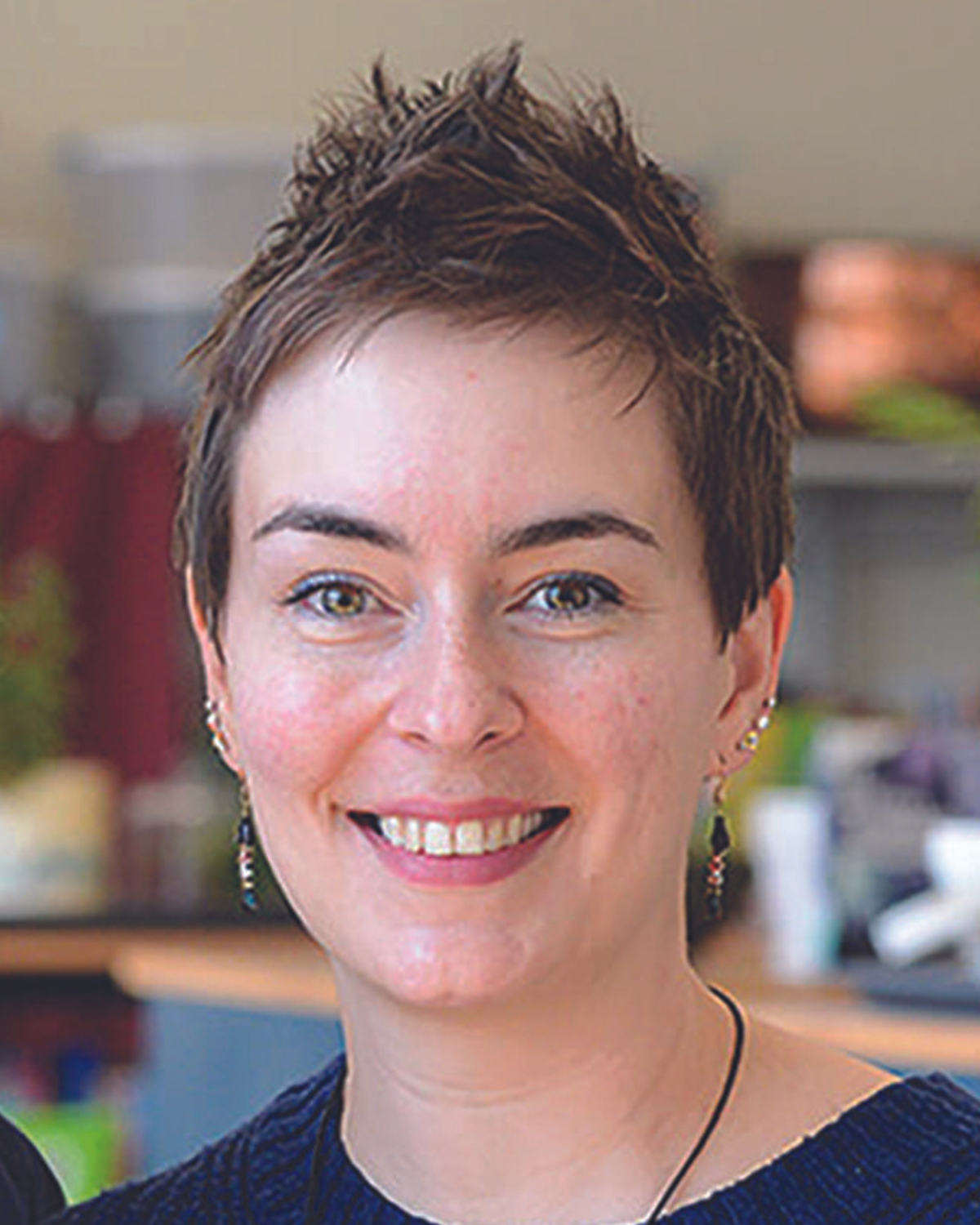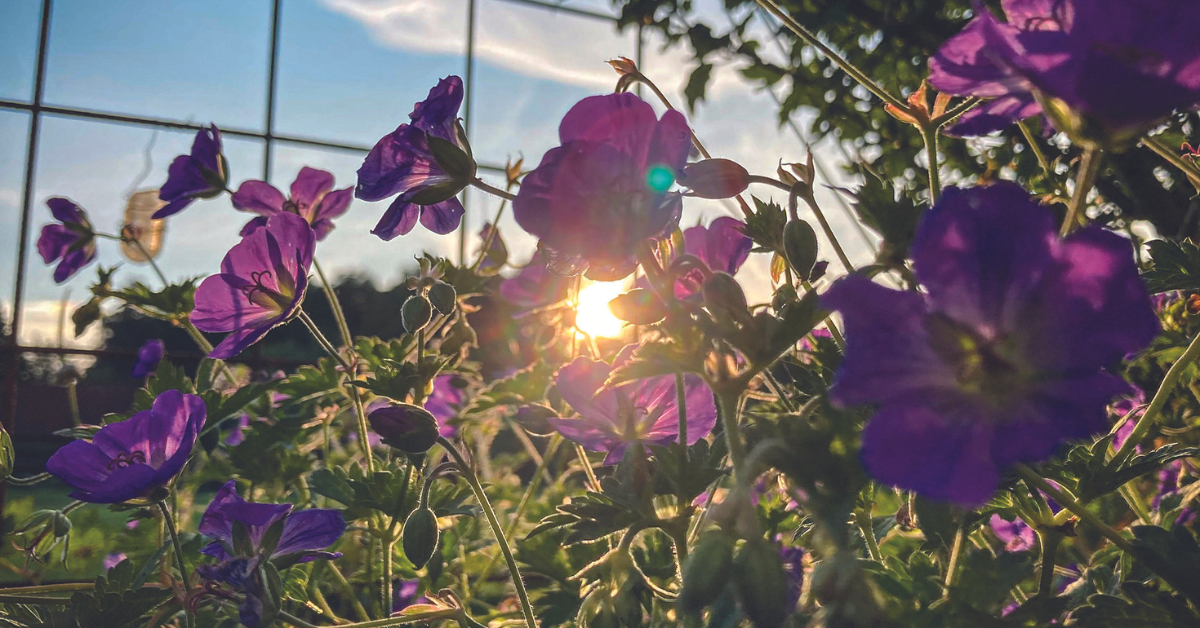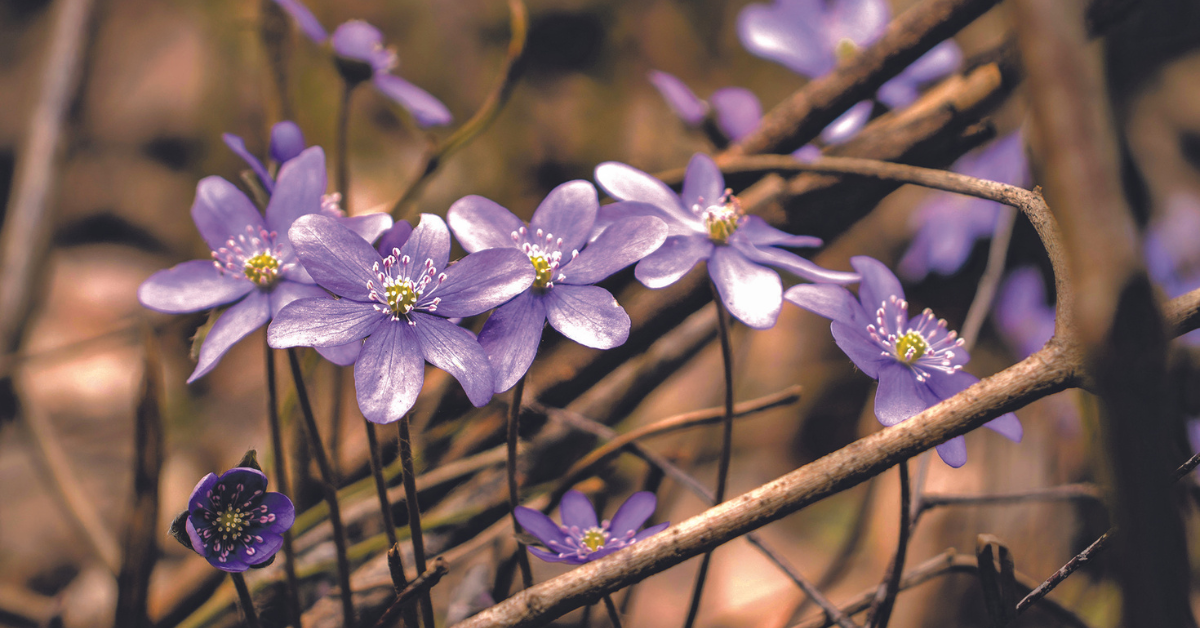March 14, 2024
The element of surprise
Unusual plants to delight your clients — and support biodiversity
BY HEATHER JERRARD
Spring will be here before we know it — and it is essential to utilize a range of different natives, nativars, trees, shrubs, perennials, wildflowers and even annuals to support biodiversity in the landscape.
Before we as landscape designers rush to put in a row of 'Goldmound' Spirea or 'Annabelle' Hydrangeas in a client's garden, might I suggest some more interesting, readily available alternatives?
As much as I love these two plants, there are so many others that can inspire intrigue and display unique characteristics that spark conversation. As a self-proclaimed plant nerd, it gives me such joy to see something new or unexpected in a garden. The plants listed below are ones that I've seen or personally used in designs that are visually interesting, are fairly easy to maintain and perform well in the landscape.
'Rozanne' Geranium - Photo credited to Anna G. via Unsplash
Full sun to part-shade
- Fothergilla (shrub) is one of my personal favourites! This plant features white bottlebrush flowers in spring, silvery bluegreen foliage in summer and beautiful red, orange and yellow tones in fall.
- Bergenia (perennial) has red, pink and white flowers in spring, as well as large, coarse-textured glossy green leaves in summer that turn reddish burgundy in fall. It also holds its leaves through winter.
- 'Rozanne' Geranium (perennial) is airy and fine textured. This is a great filler with a long bloom time and is drought tolerant once established.
- Oakleaf Hydrangea (shrub) features large, deep-toothed leaves that change colours with the season. The bark is highly textured providing winter interest and requires minimal (if any) pruning or deadheading.
- Camassia (bulb) is a gorgeous North American native showcasing spikes of blue-purple blooms and provides a great source of pollen for many of our beneficial insect friends.
- Blackberry Lilies (perennial) have leaves similar to other lilies but the flowers are tiny and delicate. In fall, the flowers become seed heads that look like blackberries which make for excellent cut flowers in arrangements.
- Amsonia (perennial) is a compact, shrub-like perennial that puts on a show in three of four seasons. Leaves are chartreuse in spring, turning deeper green in summer alongside nearly true blue flowers. In fall, the leaves become a cloud ablaze with oranges and yellows before dying back.
- Curly parsley & purple basil (annual herbs) are two annuals that I almost always add to my clients' planters. The curly, highly-textured parsley adds visual interest and is beneficial to many good bugs. The glossy, purple basil adds an unexpected, yet welcoming fragrance and texture in planters.
Full to part-shade
- Hakonechloa (grass) is a mounding grass which provides visual interest and movement in the garden. The golden and variegated cultivars brighten dark areas in a shade garden.
- Cimicifuga and Actaea (perennials) are two plants available in deep burgundy foliage colours which can add excellent contrast in an otherwise green garden.
- Barrenwort or Epimedium (perennial) is a versatile groundcover showcasing purple, yellow, pink or red blooms above green, pointed heart-shaped leaves that turn red and burgundy in autumn. An excellent choice for garden areas around the base of large, established trees.
Hepatica - Photo credited to Anna G. via Unsplash
Full sun
- Baptisia australis or false indigo (perennial) is a nitrogen-fixing legume with a flower structure similar to a lupin. Usually it has blue, yellow or purple blooms though it is also available in white, orange and pinks. It maintains a tidy shape and is great for small spaces.
- Hepatica (perennial) is a spring ephemeral with deeply lobed leaves and stunning purple-blue flowers. It is one of the first woodland wildflowers to bloom and is native to Ontario.
- Penstemon (perennial) is an upright perennial native to many areas of North America. The blooms are nearly pure white and are a host for a wide range of beneficial insects.
- Echinops and Eryngium (perennials) are almost true blue, globular flowers that provide excellent texture and contrast in summer and fall gardens. The silvery, spiny leaves make a bold statement when surrounded by smooth, green foliage of other plants and will remain upright under the weight of snow for winter interest.
- Tall verbena or Verbena bonariensis (annual) is one I personally fell in love with when I saw it in the gardens at the Royal Botanical Gardens in Burlington, Ont. The purple flowers seem to float above the foliage adding movement to planter and pot displays.
- Gaura (perennial) has one of the longest bloom times I've seen for a perennial. The fine-textured foliage and flowers are scattered along the long, airy stems and are reminiscent of fairies or tiny butterflies. Flowers are red, white, pink or a combination of all three.
 Heather Jerrard designer and owner of My Landscape Artist in London, Ont. Follow her on Instagram @mylandscapeartist
Heather Jerrard designer and owner of My Landscape Artist in London, Ont. Follow her on Instagram @mylandscapeartist

